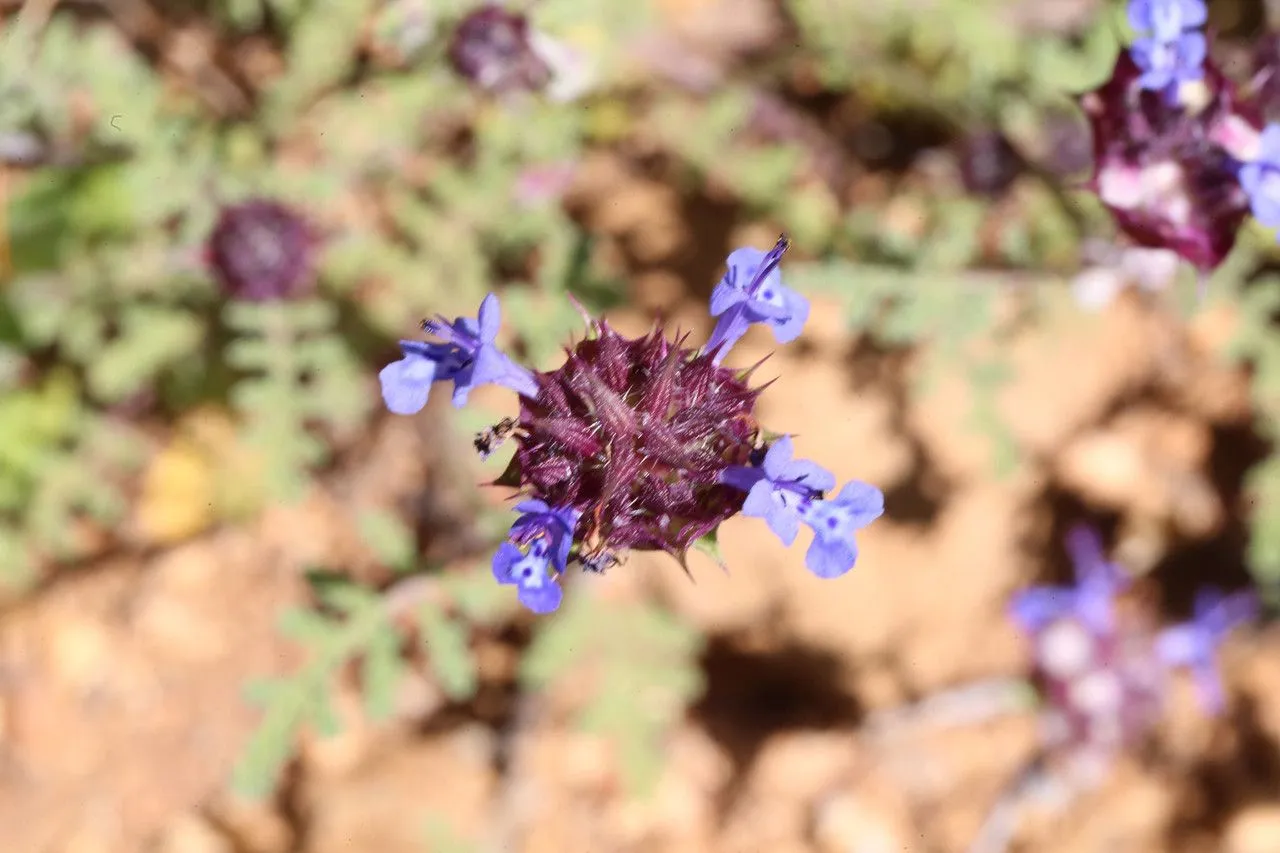
Author: Benth.
Bibliography: Labiat. Gen. Spec.: 302 (1833)
Year: 1833
Status: accepted
Rank: species
Genus: Salvia
Vegetable: False
Observations: SW. U.S.A. to New Mexico and NW. Mexico
Chia, known scientifically as Salvia columbariae, is a noteworthy member of the mint family, Lamiaceae. First described by the botanist Benth in 1833 in “Labiat. Gen. Spec.: 302,” this plant is native to the southwestern United States, extending its range to New Mexico, and further reaching into northwestern Mexico.
Typically found in the arid and semi-arid regions of its native range, Chia is a hardy and adaptable plant. It thrives in well-drained soils and can often be spotted in desert valleys, foothills, and along canyon slopes. The plant’s resilience to drought and adaptability to poor soil conditions make it a remarkable example of nature’s ingenuity in survival.
Chia is not just a plant of botanical interest; it holds cultural and practical significance too. Historically, various Indigenous peoples of the Americas utilized Chia seeds as a vital food source. The seeds are packed with nutritional value, high in omega-3 fatty acids, protein, and fiber, making them a staple in the diet of native communities. These tiny seeds possess the ability to absorb large amounts of water, forming a gel-like texture that was used to help maintain hydration and provide sustained energy.
In terms of botanical characteristics, Salvia columbariae is a small annual herb that often grows to a height of about 20-100 cm. The plant is adorned with lavender-blue flowers that bloom in compact, spherical clusters. These inflorescences not only add a splash of color to the often sparse desert landscapes but also attract a variety of pollinators, including bees and butterflies, playing an essential role in the local ecosystem.
Chia’s foliage is composed of deeply lobed, oppositely arranged leaves that are often covered with fine hairs, giving the plant a slightly fuzzy appearance. The aromatic leaves are an attribute common to many in the Lamiaceae family, releasing a pleasant fragrance when crushed.
Today, Chia continues to be valued both as a traditional food source and as a cultivated crop for its seeds in various health-food products. The plant’s historic and ongoing importance underscores the remarkable relationship between humans and nature, highlighting how traditional knowledge and botanical diversity continue to contribute to modern agricultural practices and dietary habits.
Eng: california chia, chia
En: Chia, California chia
Cs: Šalvěj kalifornská
Ml: സാൽവിയ കൊളംബേറിയ
Taken Sep 18, 2020 by jkt99 (cc-by-sa)
Taken Oct 7, 2021 by Dee (cc-by-sa)
Taken Feb 27, 2016 by EOL − tphender (cc-by-nc)
Taken Aug 24, 2012 by EOL − Keir Morse (cc-by-nc-sa)
Taken Mar 28, 2015 by EOL − icosahedron (cc-by)
Taken Apr 2, 2016 by EOL − Dale Hameister (cc-by-nc)
Taken May 8, 2022 by shelly huber (cc-by-sa)
Taken Sep 18, 2020 by jkt99 (cc-by-sa)
Taken Apr 13, 2016 by EOL − blueringedoctopus1 (cc-by-nc)
Taken Apr 15, 2021 by Audre Audre Newman (cc-by-sa)
Taken Mar 25, 2016 by EOL − Steven Thorsted (cc-by-nc)
Taken Oct 7, 2021 by Dee (cc-by-sa)
© copyright of the Board of Trustees of the Royal Botanic Gardens, Kew.
© copyright of the Board of Trustees of the Royal Botanic Gardens, Kew.
© copyright of the Board of Trustees of the Royal Botanic Gardens, Kew.
Taken Mar 23, 2016 by EOL − lonnyholmes (cc-by-nc)
Taken Mar 18, 2016 by EOL − Chris Evers (cc-by-nc)
Taken Mar 19, 2016 by EOL − motogeek14 (cc-by-nc)
Taken Mar 20, 2016 by EOL − lizhaber (cc-by-nc)
Taken Mar 25, 2016 by EOL − Donna Pomeroy (cc-by-nc)
Taken Dec 2, 1998 by EOL − Charles Webber (cc-by-nc-sa)
Taken Oct 17, 2012 by EOL − BJ Stacey (cc-by-nc)
Taken Mar 11, 2016 by EOL − hummer56 (cc-by-nc)
Taken Apr 13, 2016 by EOL − blueringedoctopus1 (cc-by-nc)
Taken Apr 13, 2016 by EOL − blueringedoctopus1 (cc-by-nc)
Growth habit: Forb/herb
Family: Myrtaceae Author: (F.Muell.) K.D.Hill & L.A.S.Johnson Bibliography: Telopea 6: 402 (1995) Year: 1995 Status:…
Family: Rubiaceae Author: Pierre ex A.Froehner Bibliography: Notizbl. Bot. Gart. Berlin-Dahlem 1: 237 (1897) Year:…
Family: Sapindaceae Author: Koidz. Bibliography: J. Coll. Sci. Imp. Univ. Tokyo 32(1): 38 (1911) Year:…
Family: Asteraceae Author: A.Gray Bibliography: Pacif. Railr. Rep.: 107 (1857) Year: 1857 Status: accepted Rank:…
Family: Fabaceae Author: Medik. Bibliography: Vorles. Churpfälz. Phys.-Ökon. Ges. 2: 398 (1787) Year: 1787 Status:…
Family: Aspleniaceae Author: (Cav.) Alston Bibliography: Bull. Misc. Inform. Kew 1932: 309 (1932) Year: 1932…